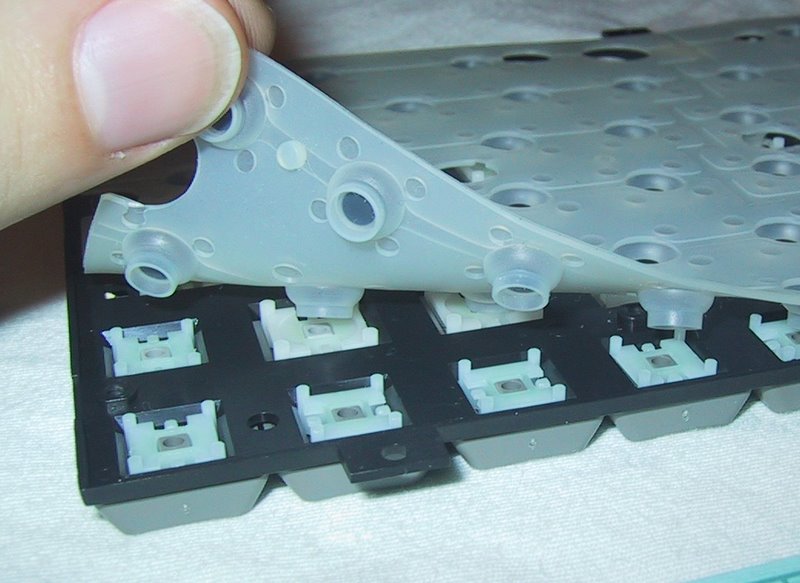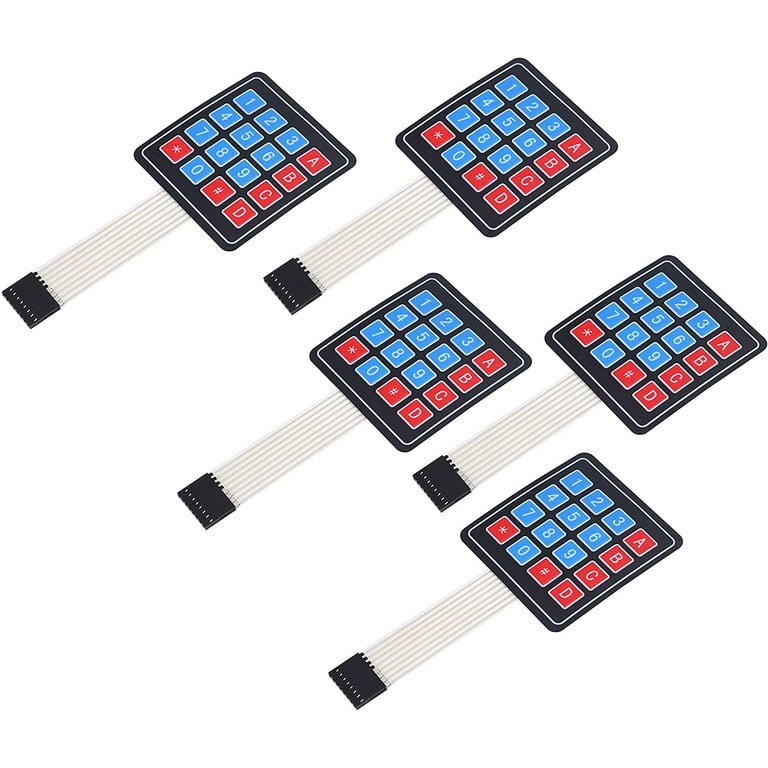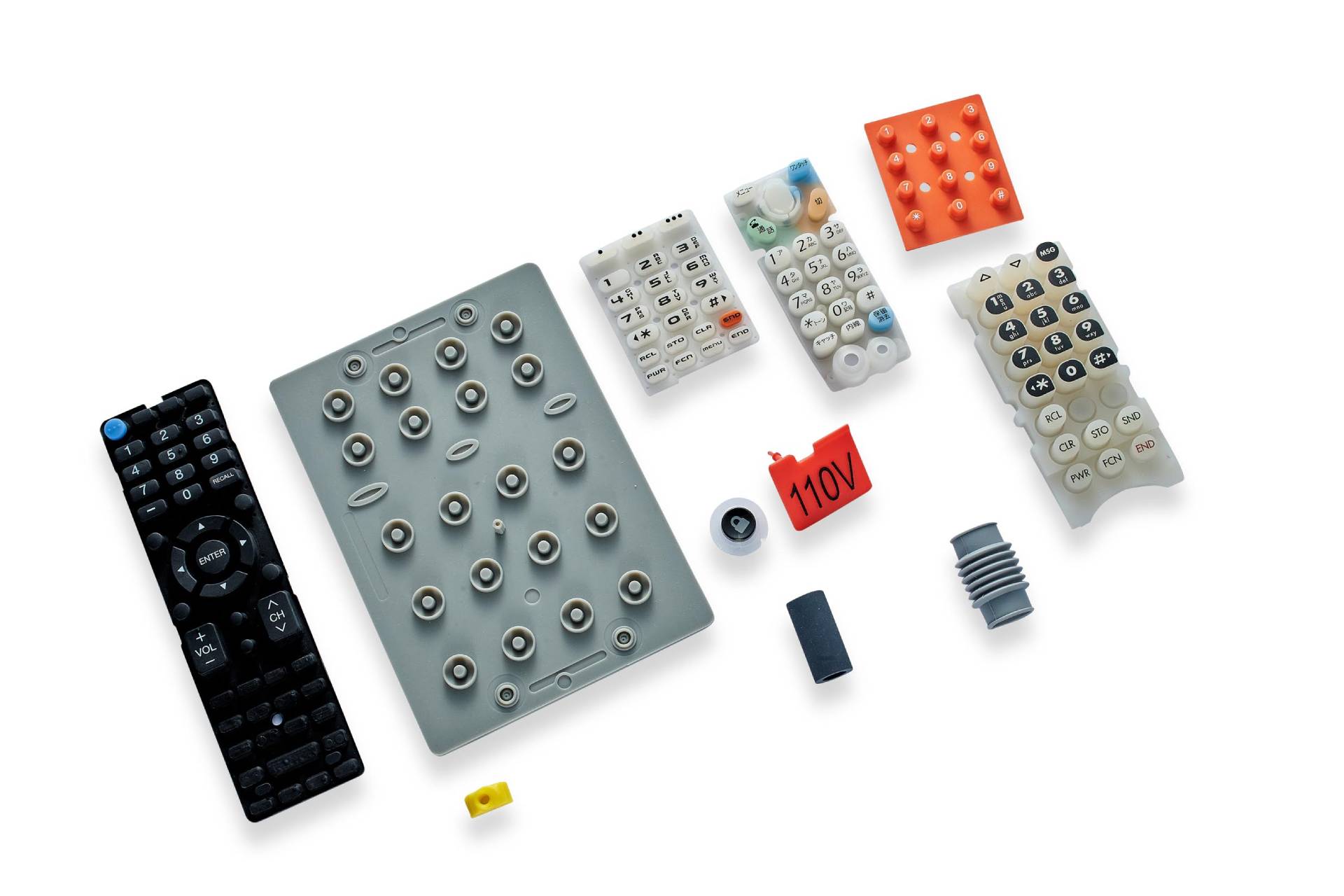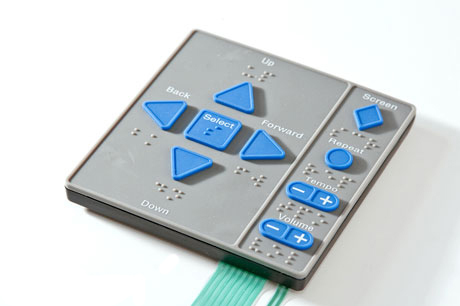High-Performance Products from a Membrane Switch Manufacturer You Can Rely On
Comprehending the Significance of Membrane Switch in Modern Electronic Devices and Their Applications
Membrane switches over act as a crucial part in modern electronics, supplying a reliable user interface for individual communication. Their light-weight and adjustable nature makes them suitable for a range of applications across varied sectors. Recognizing their crucial parts and benefits can supply understandings into their growing relevance. As technology remains to advance, the evolution of Membrane switches over questions about their future applications and design innovations. What exists in advance in this dynamic field?

What Are Membrane Buttons?
Membrane switches are vital elements in modern electronics, offering as interface that assist in interaction between tools and individuals. These switches include a number of layers, including a visuals overlay, a glue layer, and a circuit layer, all of which collaborate to produce a resilient and functional interface. The layout allows for a level, low-profile solution that can be tailored relating to size, form, and visual look, making them suitable for numerous applications, from consumer electronic devices to medical tools. The tactile responses supplied by Membrane changes boosts user experience, while their resistance to dust and wetness makes them perfect for testing atmospheres. Membrane switches can include features such as backlighting and printed graphics, better expanding their functionality. Their versatility and toughness make them a recommended choice in markets where integrity and ease of use are vital, inevitably contributing to the seamless procedure of modern-day electronic devices.
Secret Elements of Membrane Switches
While various elements add to the capability of a membrane layer switch, three main layers play considerable duties in its layout and procedure. The top layer, generally made from a long lasting polymer, acts as the user interface for individual communication, often featuring printed icons and graphics. Below this is the spacer layer, which preserves the needed range between the top layer and the circuit layer. This spacer layer assurances that the switch triggers only when pressed, avoiding unintentional inputs. The circuit layer includes conductive traces that complete the electrical circuit when the leading layer is dispirited. These traces can be made from various materials, including copper or silver. With each other, these elements develop a robust and reliable device that is portable and functional, appropriate for a wide variety of electronic applications, from house devices to medical devices. Understanding these vital elements is important for appreciating the total performance of Membrane buttons.
Benefits of Using Membrane Changes

Membrane Switch Manufacturing Process
Understanding the Membrane switch production process exposes the complex actions associated with generating these vital components. The procedure generally begins with the style stage, where specifications and formats are developed using specialized software program. Following this, the visuals overlay is published on an adaptable substratum, frequently using high-resolution printing techniques to guarantee quality and precision.Next, the sticky layers are applied, which serve to bond the numerous parts with each other. The circuit layers, made from conductive inks or materials, are then published onto a separate substratum. These layers are very carefully straightened and laminated to develop a practical switch.After setting up, the buttons undertake checking to confirm functionality and durability. Quality control measures are applied throughout the procedure to identify and rectify any kind of defects. Lastly, the completed Membrane buttons are packaged and prepared for distribution, all set to satisfy the needs of contemporary digital applications.
Applications of Membrane Changes in Different Industries
Membrane buttons are increasingly made use of across numerous industries, especially in clinical tools and consumer electronic devices. In the clinical area, they offer trusted control interfaces for gadgets that need precise procedure. In a similar way, in customer electronics, these buttons boost user communication by providing smooth and responsive user interfaces.
Medical Tools Control
Various contemporary medical gadgets make use of Membrane switches for structured operation and improved customer interaction. These buttons offer a trustworthy, sturdy user interface for a range of applications, consisting of diagnostic equipment, client monitoring systems, and surgical instruments. Their adjustable layouts permit certain designs that can suit the special needs of health care professionals, making sure intuitive navigating and reliable accessibility to crucial functions. In addition, Membrane buttons are resistant to pollutants, making them suitable for sterile settings. The responsive responses they supply can improve individual confidence, reducing the danger of mistakes throughout vital medical treatments. In general, the integration of Membrane switches in clinical devices significantly contributes to improved view it operational efficiency and patient security in healthcare settings.
Consumer Electronic Devices Interfaces
In the domain of customer electronics, Membrane switches play a critical role in enhancing user interfaces across a large range of gadgets. These switches are indispensable to items such as remotes, microwaves, and gaming consoles, giving a straightforward and efficient user interface. Their design permits a seamless combination of graphics and capability, enabling producers to create streamlined, modern aesthetics without endangering use. Membrane switches are likewise recognized for their longevity, usually holding up against substantial use and exposure to various environmental conditions. Additionally, they can include functions like backlighting and responsive responses, additional improving the customer experience. As customer demands for sophisticated yet user-friendly interfaces grow, Membrane switches over remain to be a vital component in advancing digital tool performance.
Design Considerations for Membrane Switches Over
Designing reliable Membrane switches over calls for mindful attention to different aspects that influence both performance and user experience. One important factor to consider is go to my blog the selection of materials, as they can impact durability, responsive feedback, and aesthetic allure. Choosing a suitable adhesive is important for assuring lasting attachment and resistance to ecological factors.In addition, the format and layout of the button have to fit user communication, with switch sizes and spacing enhanced for simplicity of use. The incorporation of graphics and labeling need to focus on clarity and visibility under various lighting conditions.Consideration of electrical characteristics, such as actuation force and switch sensitivity, will improve the responsiveness of the Membrane button. The style must fit making procedures to ensure cost-effectiveness and prompt production. Overall, a well-thought-out design enhances both the individual and the performance experience of Membrane buttons in modern electronics.

Future Patterns in Membrane Switch Innovation
As technology remains to evolve, Membrane buttons are poised to integrate new advancements that will certainly boost their performance and application in numerous areas. One significant trend is the consolidation of adaptable and sturdy materials, which will enhance the life-span and reliability of these switches. Boosted surface textures and adjustable graphics are likewise prepared for, enabling more instinctive user interfaces.Moreover, the assimilation of wise technology, such as touch-sensitive surface areas and haptic comments, is expected to enhance user interaction, making Membrane switches over a lot more responsive and appealing. Furthermore, advancements in published electronics will certainly allow much more complicated circuitry within thinner accounts, further expanding style possibilities.Sustainability will certainly also play a vital function in future advancements, as makers check out environmentally friendly materials and manufacturing processes. Overall, these trends will guarantee that Membrane switches over stay pertinent and essential in an interconnected and increasingly electronic globe.
Often Asked Inquiries
Just How Do Membrane Switches Contrast to Standard Mechanical Switches?
Membrane changes deal benefits over traditional mechanical buttons, including reduced dimension, lighter weight, and improved durability. They commonly supply a sealed surface, boosting resistance to dust and dampness, making them optimal for varied applications.
What Materials Are Generally Utilized in Membrane Switch Building And Construction?

Can Membrane Changes Withstand Extreme Environmental Conditions?
Membrane buttons can withstand severe ecological problems, depending upon their style and products. Top notch building and constructions usually site web include durability versus temperature fluctuations, humidity, and direct exposure to chemicals, making them appropriate for different demanding applications throughout markets.
For How Long Do Membrane Changes Generally Last Prior To Failing?
Membrane switches over normally display a lifespan varying from 1 to 10 million actuations, depending upon factors such as use frequency, ecological conditions, and making high quality. Regular upkeep can extend their durability and functional reliability substantially.
Are Membrane Switches Over Customizable for Details Applications?
Membrane buttons are indeed personalized for particular applications. They can be customized in size, performance, and layout, enabling suppliers to meet special customer requirements and improve item aesthetic appeals while keeping operational effectiveness and longevity. Membrane switches are vital parts in modern electronics, serving as individual interfaces that promote interaction between individuals and gadgets. The responsive feedback offered by Membrane changes improves individual experience, while their resistance to dirt and dampness makes them ideal for challenging environments. The incorporation of graphics and labeling ought to prioritize clearness and exposure under different illumination conditions.Consideration of electrical attributes, such as actuation pressure and switch sensitivity, will enhance the responsiveness of the Membrane switch. Enhanced surface area appearances and personalized graphics are additionally prepared for, enabling for even more user-friendly individual interfaces.Moreover, the integration of smart technology, such as touch-sensitive surface areas and haptic responses, is anticipated to enhance user interaction, making Membrane changes a lot more interesting and receptive. Membrane switches deal benefits over typical mechanical buttons, including reduced dimension, lighter weight, and boosted longevity.